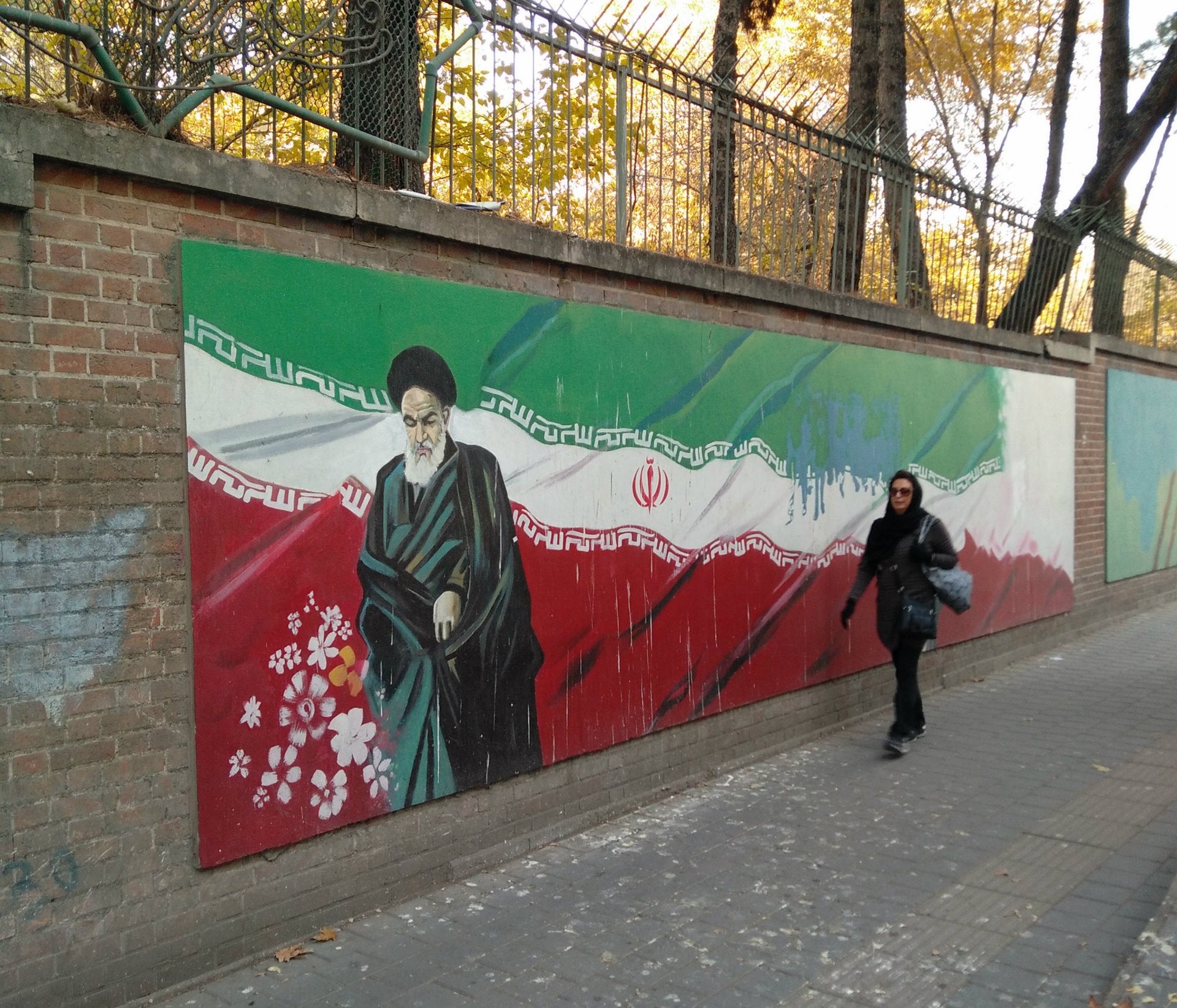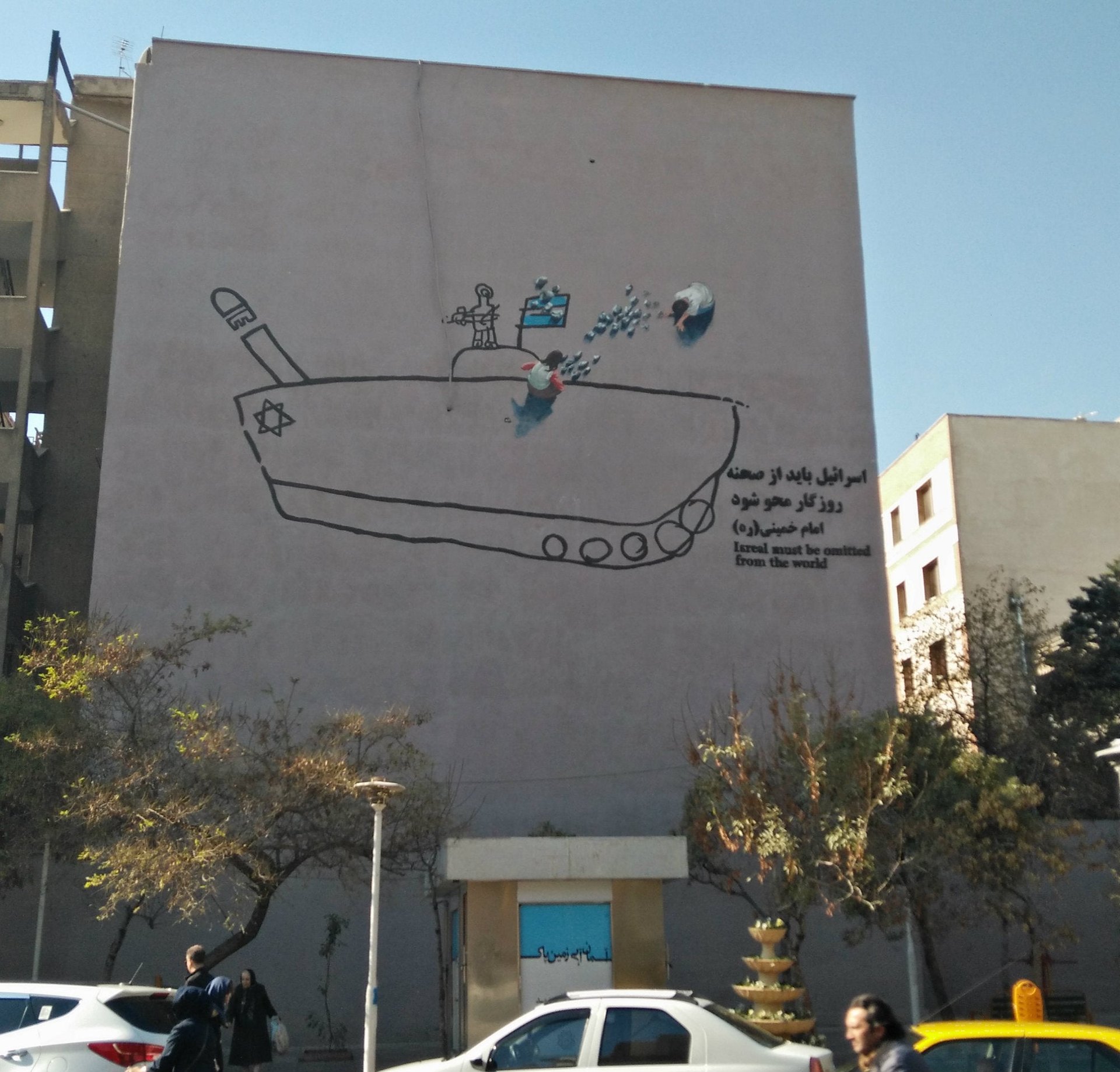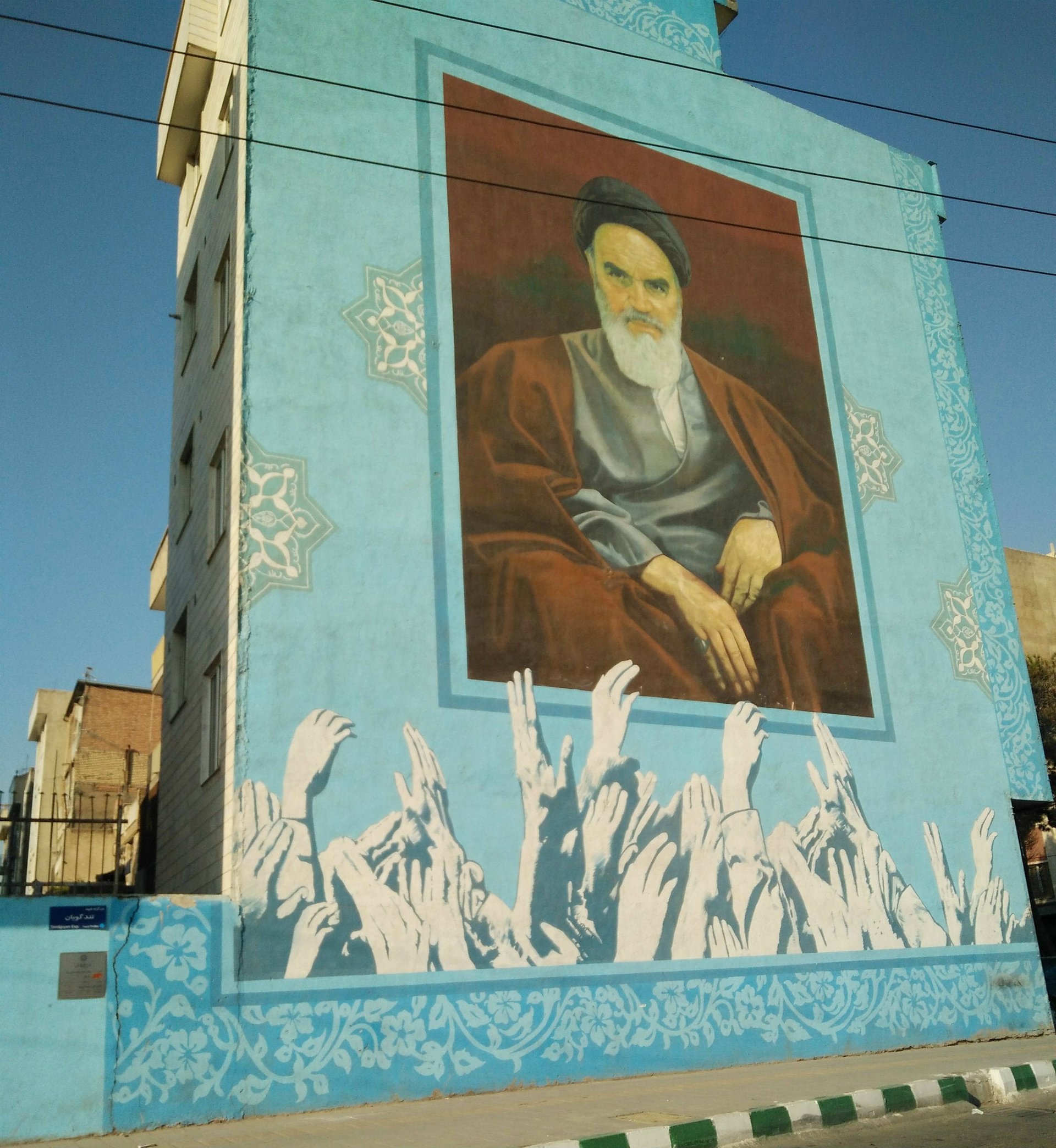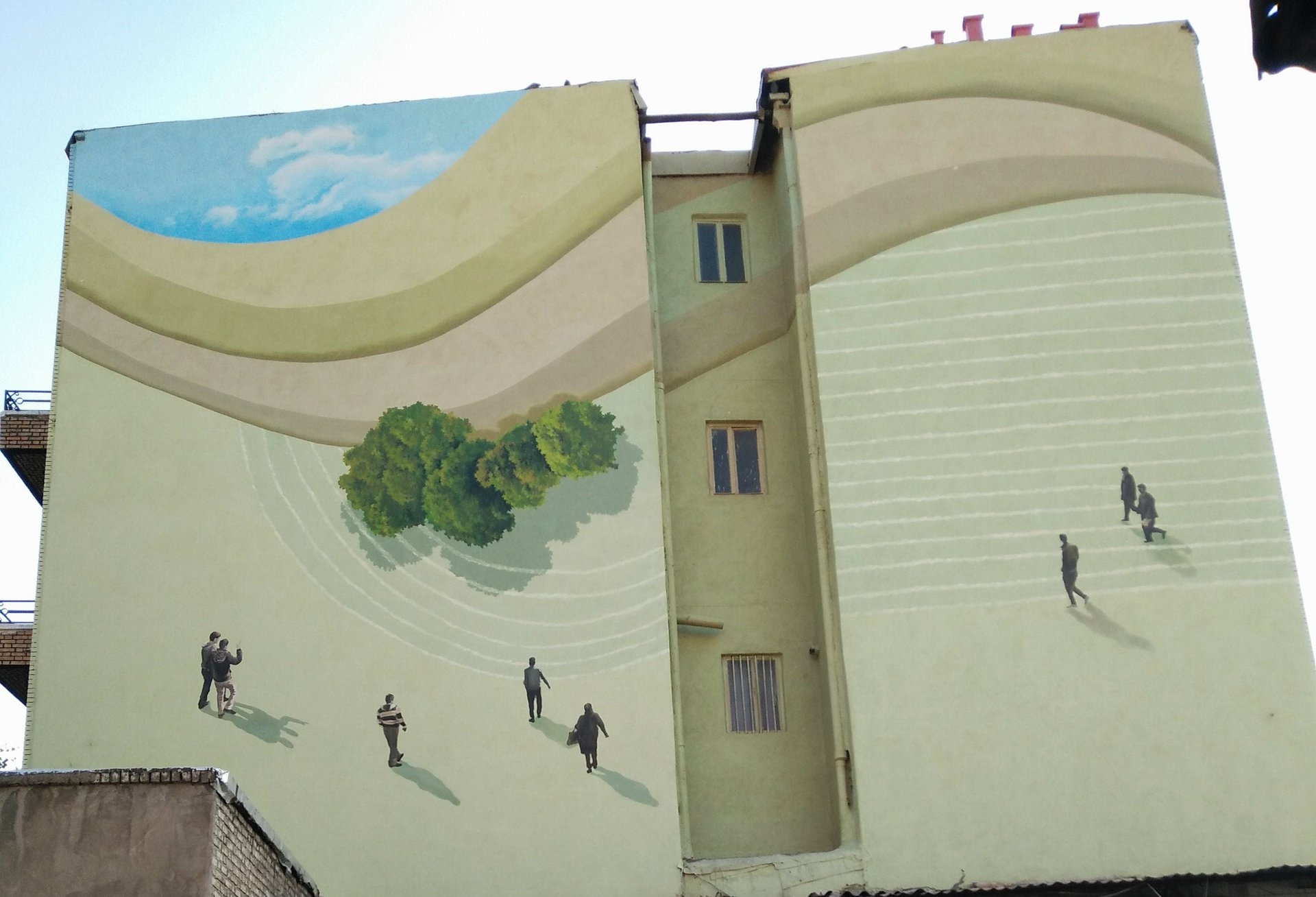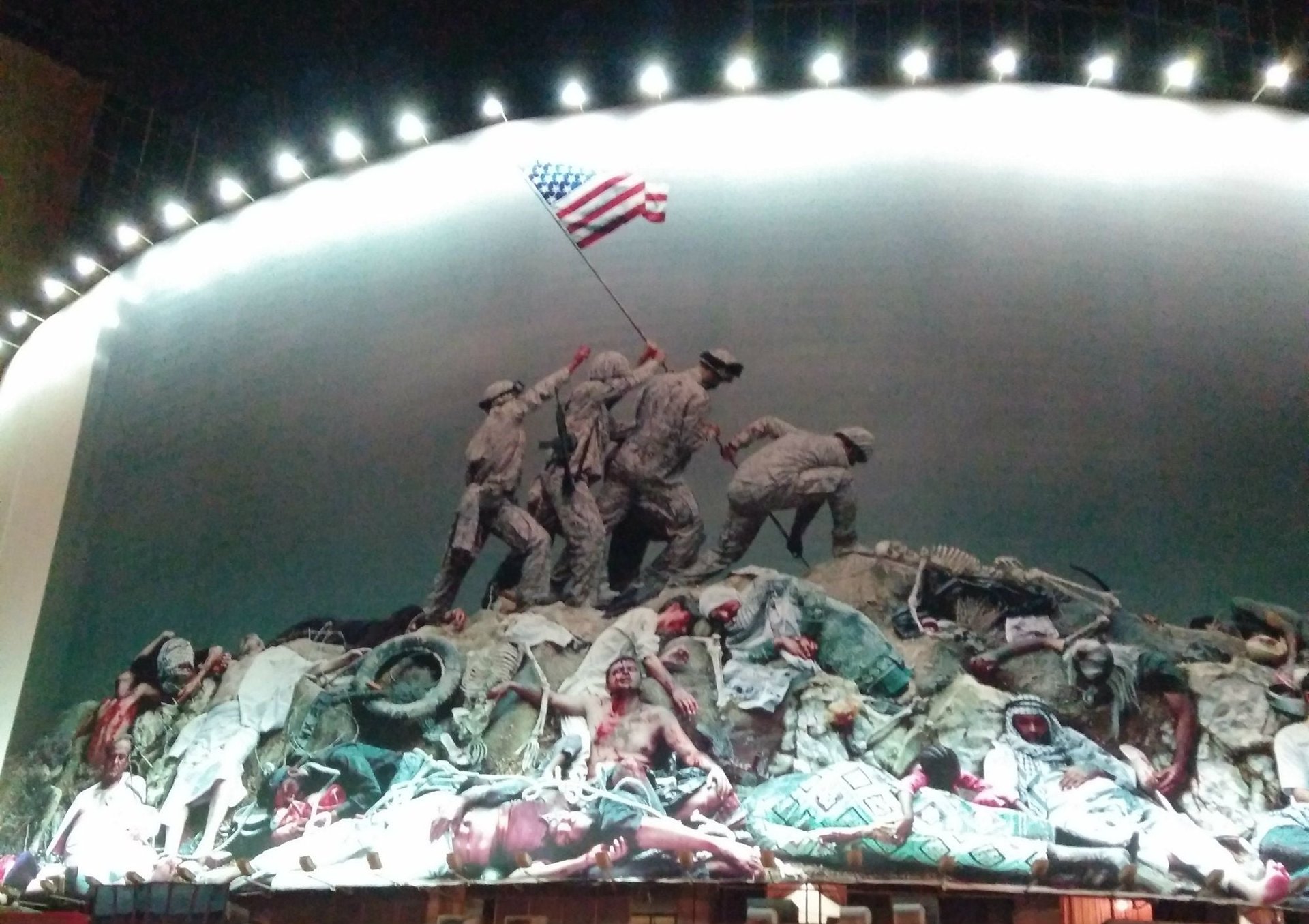
Tehran, Iran
“You’re from America? Look there… America!”
My taxi driver has brought his battered Peugeot to a rattling halt on Valiasr Square, normally one of Tehran’s busiest intersections, but dead quiet at 2:30am. He’s bringing me from the airport to my hotel, but upon learning that I’m a New Yorker, he’s decided to take a short detour to show me one of the Iranian capital’s latest attractions.
At first glance, the giant poster looming over the square seems like a hi-gloss rendering of the iconic image of American soldiers raising the Stars and Stripes on Iwo Jima. But as my sleep-deprived eyes adjust to the bright lights shone on the image, I realize it’s a political message. The soldiers are planting the flag on a mound of bodies—they look Iranian, but represent all the oppressed peoples of the world.
The message is not subtle: These are the innocent victims of America’s military adventures. (One of the bodies in the mound is wearing what looks like a Miami Dolphins t-shirt. It’s not clear whether this is a message-within-a-message.)
“It’s nice for you?”
The driver has very little English, but sarcasm is a universal language.
The giant poster, entitled “The Story of a Flag,” went up a few days before my arrival, to mark the 36th anniversary of the seizure of the US embassy—and of more than 60 Americans—by Iran’s triumphant revolutionaries. Just around the corner is a giant poster depicting US president Barack Obama hanging out with Shemr, one of the vilest villains in Shia Islam, Iran’s majority faith.
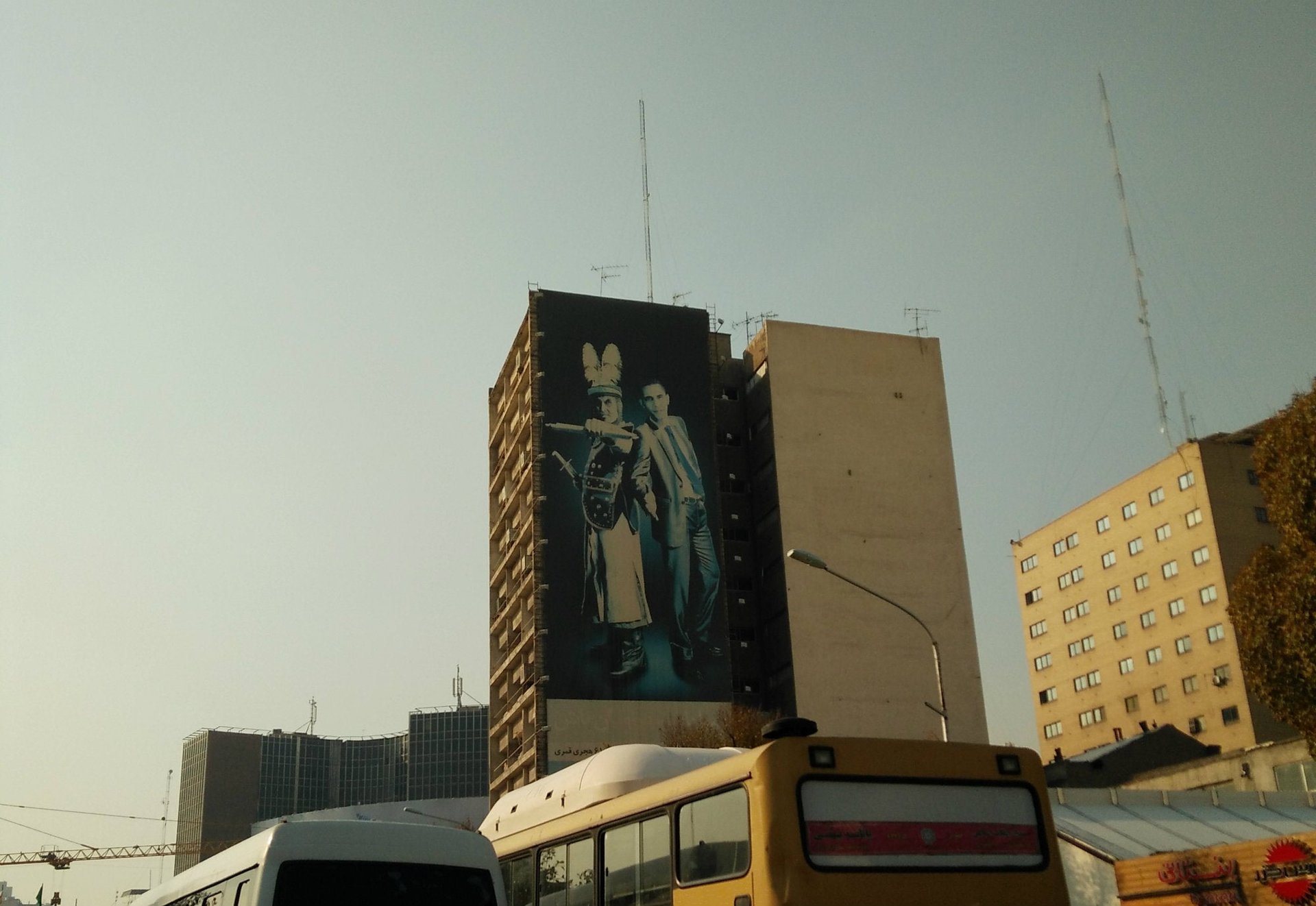
For more (and more baroque) anti-America imagery, visitors can go to the former embassy, now known as the “Den of Espionage.”
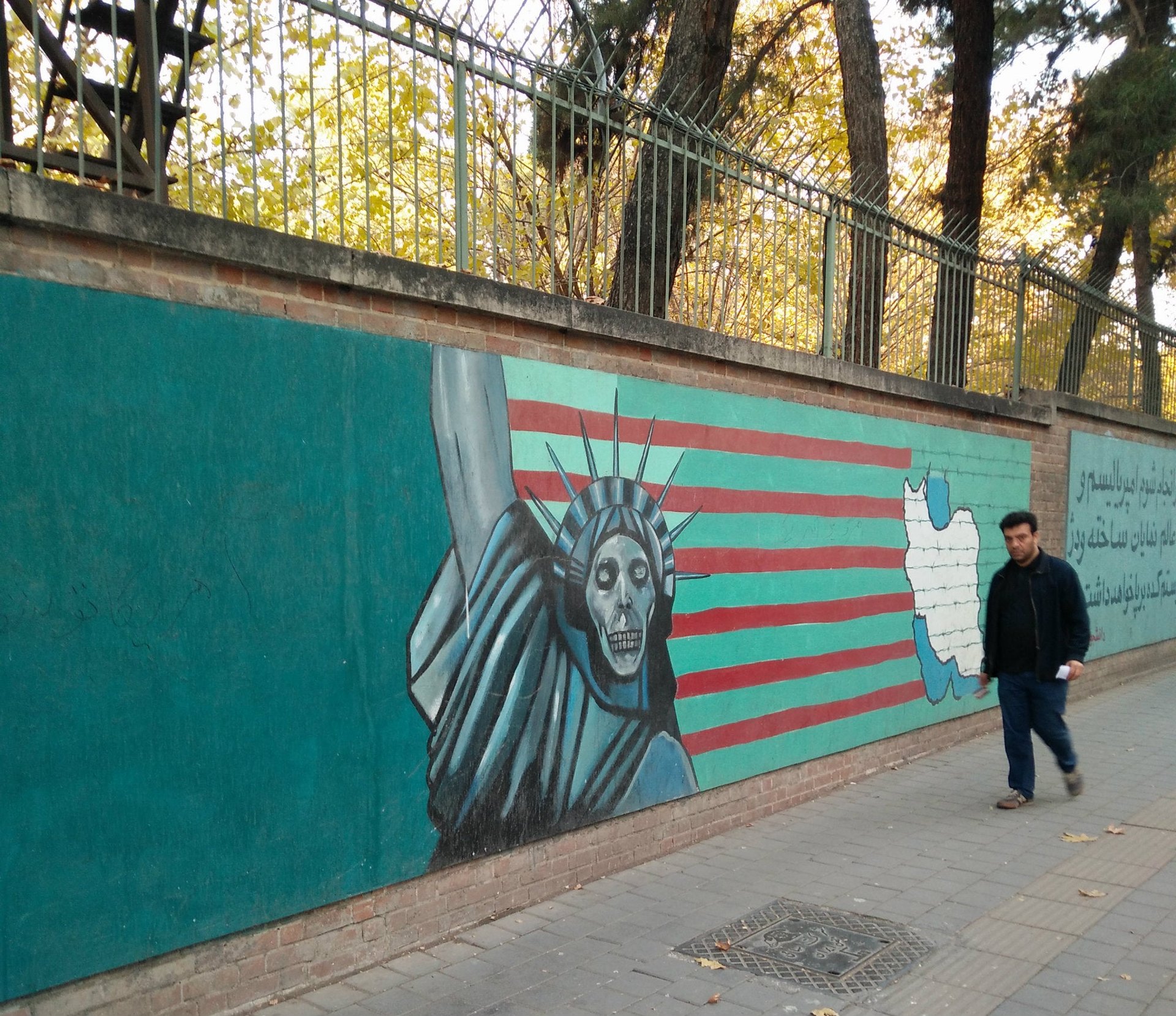
“The Story of a Flag” is my first impression of Tehran, but it is a deceptive one. Although anti-Americanism is alive and well in Iran—it is stoked with great enthusiasm by newspapers, TV stations, and the speeches of the supreme leader, ayatollah Ali Khamenei—it is not the dominant theme in Iranian public art. Tehran’s propaganda murals, commissioned by the city’s Bureau of Beautification, have moved on from crude political propaganda to more abstract artistic expression, even to flights of whimsy.
What this reveals about Iran’s state of mind, or its political temperature, is anybody’s guess—but it is, to paraphrase my taxi driver, nice for me.
Tehran abhors blank walls. Wherever you go in this city of 9 million souls, the sides of large buildings—residential blocks, office towers, malls, even factories—are covered with vivid murals. They dominate the cityscape, more than commercial billboards, more than the countless Iranian flags, and more even than the giant Milad Tower.
Tehran’s murals first caught international attention after the Islamic Revolution of 1979, when artists were encouraged to extol ayatollah Ruhollah Khomenei, the revolution’s spiritual leader. His grim visage peered down from scores of buildings, alongside imagery familiar from revolutions elsewhere in the world: marching citizens, fists upheld, banners unfurled. In keeping with the Iranian revolution’s religious nature, many murals were emblazoned with quotations from the Quran.
But it was the Iran-Iraq war of 1980-88 that took Tehran’s murals to new heights. The Islamic Republic decided to use its walls to commemorate its martyrs, stiffen the national resolve, and inspire new recruits. Thousands of Iranian soldiers killed on the western front achieved a degree of posthumous fame in this manner. The imagery was florid, the messaging blunt: These men (they were mostly men) have given their lives for you, so celebrate them and follow their example.
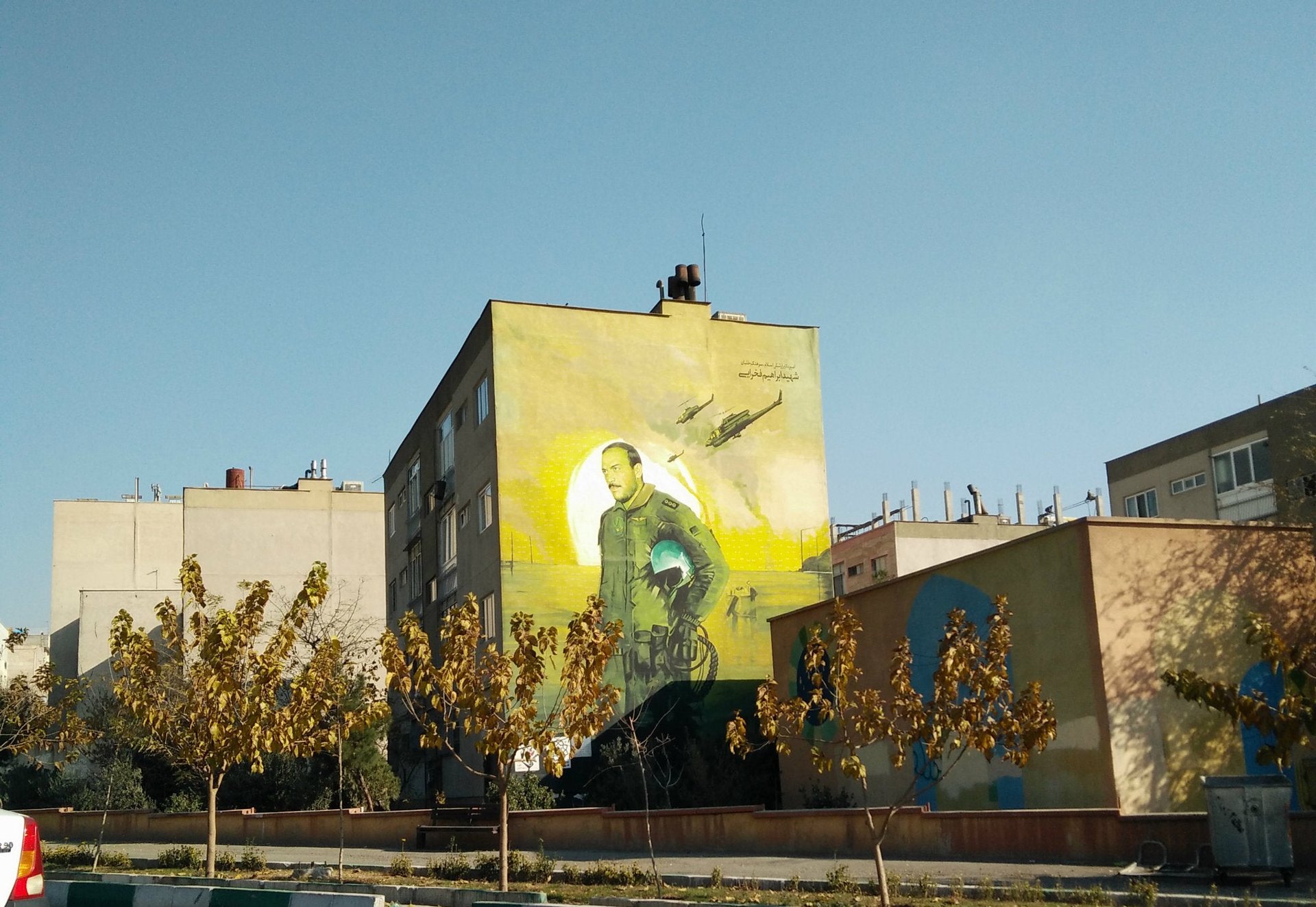
In over a week of driving around Tehran, I encounter scores of murals commemorating the martyrs and veterans of the Iran-Iraq war. But their bright colors have been dulled by age and dust. Here and there, an image shows signs of a recent touch-up, but the overwhelming impression is that the war is slowly fading from memory.
The most vivid murals now are neither political, nor religious. About a decade ago, Tehran’s authorities decided that their city needed cheering up, and commissioned hundreds of new murals, most of them abstract and playful in spirit. Of these, the best are the conception of one artist: Mehdi Ghadyanloo. He has inevitably been declared the Persian Banksy, and painted a mural in London’s Shoreditch earlier this year, to launch his first exhibition in the UK.
Ghadyanloo, 35, doesn’t abjure politics entirely: In one mural, a jet fighter (presumably Western) is seen dropping bombs on playing children. But most of his work is whimsical, designed to amuse.
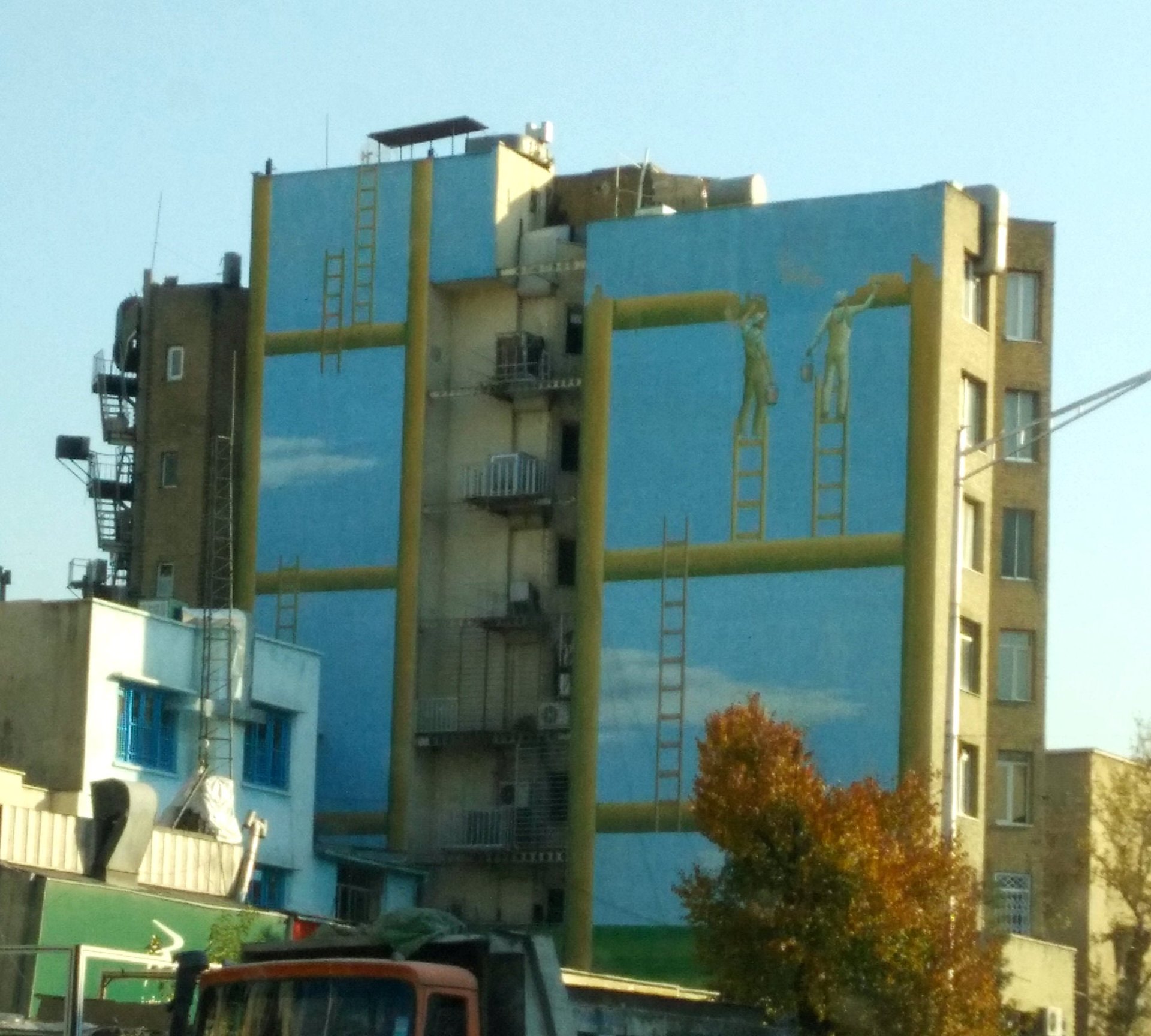
It’s hard to know which direction Tehran’s muralists will go in next. If relations with the US remain testy, then anti-American themes will occasionally pop up—for certain, the arch-villain Shemr will need a new companion after the US presidential election next year. If more and more Iranian soldiers are killed in Syria, that could set off a new wave of martyrdom murals. Some Iranians worry that when sanctions are removed and the economy recovers from a recent slump, there will be pressure to give over some wall space to commercial, rather than artistic, expressions.
As distasteful as I find ‘The Story of a Flag,” the thought of Valiasr Square given over entirely to ads for cellphones and cola is almost as bad.
[Scroll down for more examples of Tehran’s murals.]
